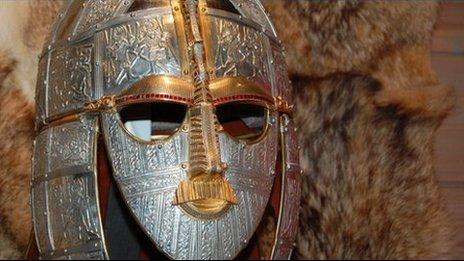Rendlesham: Royal Anglo-Saxon complex is 'unique in England'
- Published
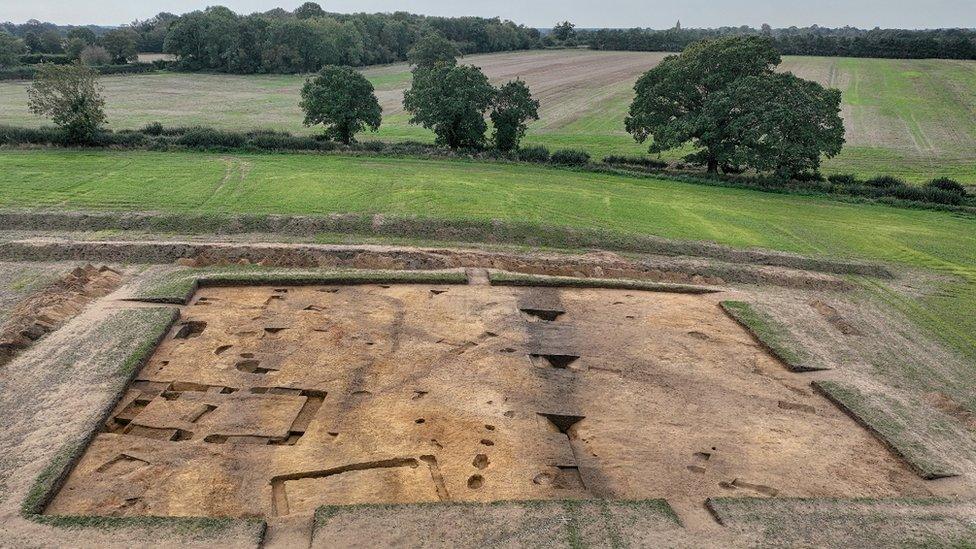
Only one other Anglo-Saxon temple or cult site has previously been found in England
The discovery of a 1,400-year-old "possible temple" near Sutton Hoo is the latest in a series of archaeological finds that has revealed the scale and wealth of an Anglo-Saxon settlement. Historians have long-been intrigued by a reference by the 8th Century monk-chronicler Bede to the royal complex at Rendlesham, Suffolk. After more than a decade of surveys and excavations, the site has exceeded their expectations. So, what has been revealed so far?
How was the site found?
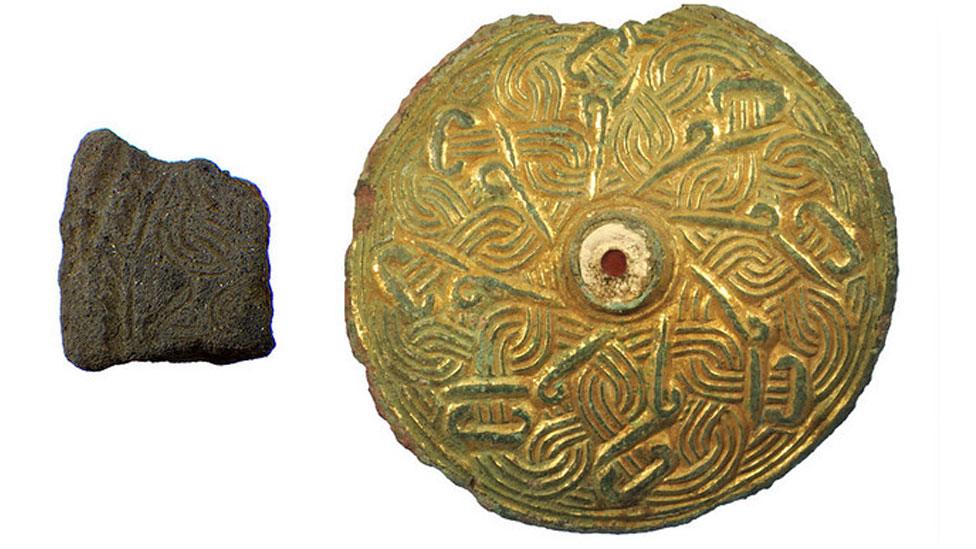
Evidence of high quality craftsmanship has been found, including a fragment of a mould (left) used for metalworking a horse harness mount
The discovery of the royal settlement goes back to 2007, when a landowner reported illegal metal detecting on his land. It is is about five miles (eight km) from the famous Sutton Hoo ship burial, discovered in 1939.
King Raedwald, the first king of the East Angles to convert to Christianity and who died in AD 625, is believed to be buried there.
The landowner consulted the archaeological service at Suffolk County Council and agreed to a pilot project to understand what might have been stolen.
Four skilled, legal detectorists surveyed the 172ha (425 acre)-farm at least twice between 2009 and 2014, bagging more than 100,000 items, each with their own geolocation tag.
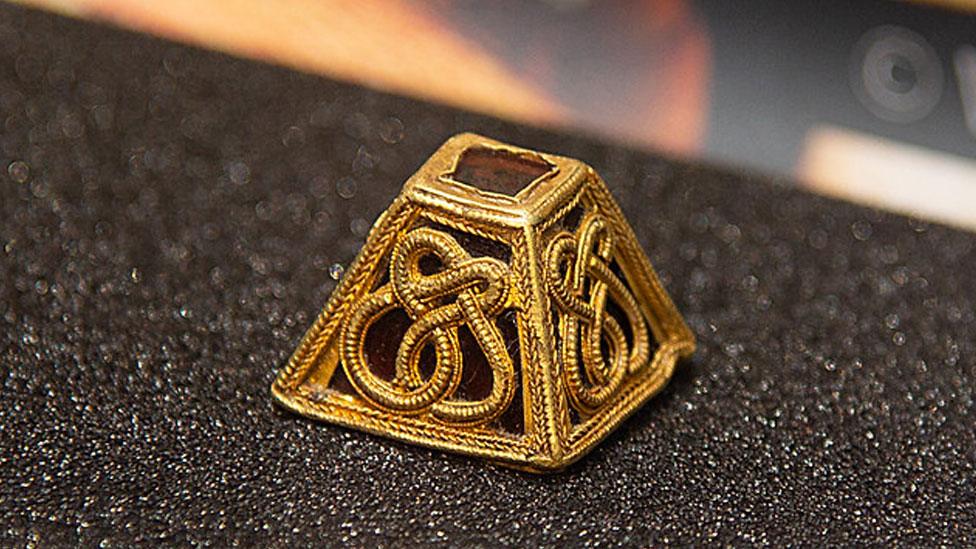
By the time the Rendlesham Revealed community archaeology project began, experts knew it was an important site
Geophysical and aerial surveys identified pits and ditches in the same areas as the 5th to 8th Century metalwork finds.
By the time the council's Rendlesham Revealed four-year community dig began in 2022, archaeologists knew it was the location of an important Anglo-Saxon settlement, but archaeologist Prof Chris Scull said its "scale is beyond anything anyone would have predicted when we first recognised the site".
Evidence suggested it was the "king's village" at "Rendlaesham", referred to by Bede in his book An Ecclesiastical History of the English People.
What has been found?
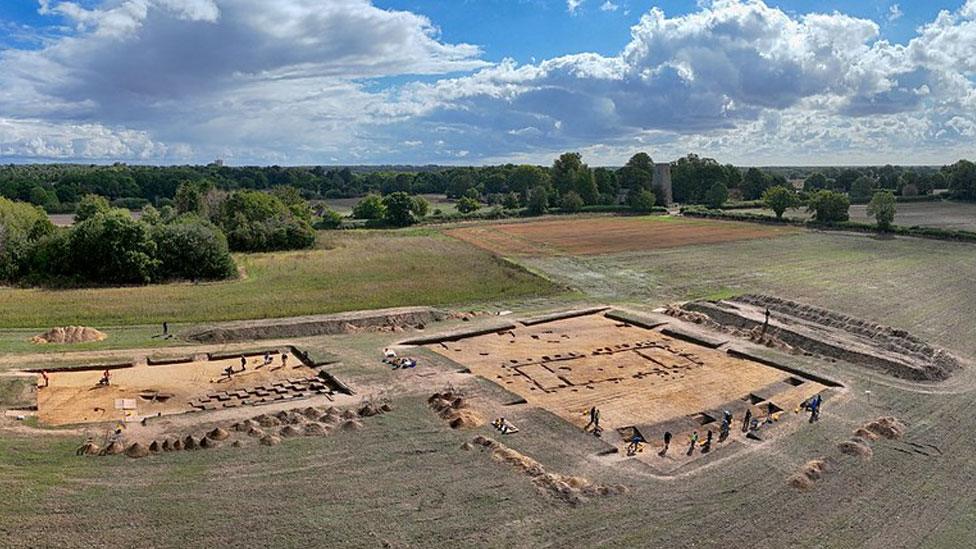
The hall and boundary ditch (right hand trench) and its rubbish dump (left hand trench) were uncovered in 2022
Prof Scull, who is advising the project, said: "We were fairly clear from the outset that it was a very large settlement covering 50ha (125 acres).
"It does stand out as really quite unique in England because of the size and scale of the enclosure."
As well as a wider settlement of little family farms, there was "an elite compound", which at between 12 to 15ha (29 acres to 37 acres), was twice as big as expected.
Previously elite great hall complexes were understood to be small.
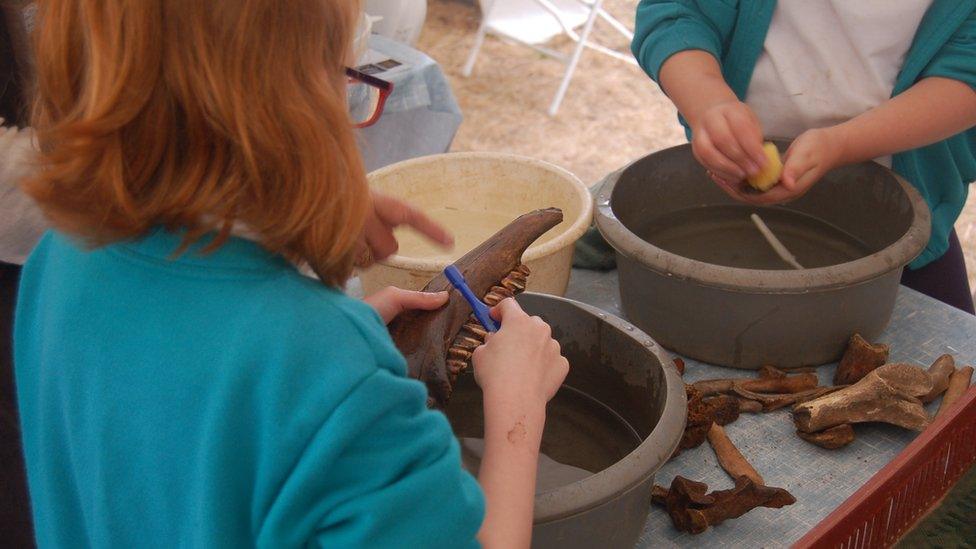
Local primary school children have taken part in the excavations, here seen cleaning an excavated animal bone
It was demarcated by a boundary ditch which enclosed an array of timber buildings - a great hall or halls, the possible "cult house" or temple, and other structures such as stables and craft workshops.
This "possible" Anglo-Saxon temple is one of only two found in England, with the other discovered at Yeavering, Northumbria.
"We assume they had a pantheon of gods, and we believe an individual chose to align themselves with a particular god or demi-god," he said.
"One of the things Bede says is that Raedwald backslides after his conversion to Christianity and kept altars to Christ and to other pre-Christian gods - in their world view Christ may have been just another powerful god among many."
A royal centre of power
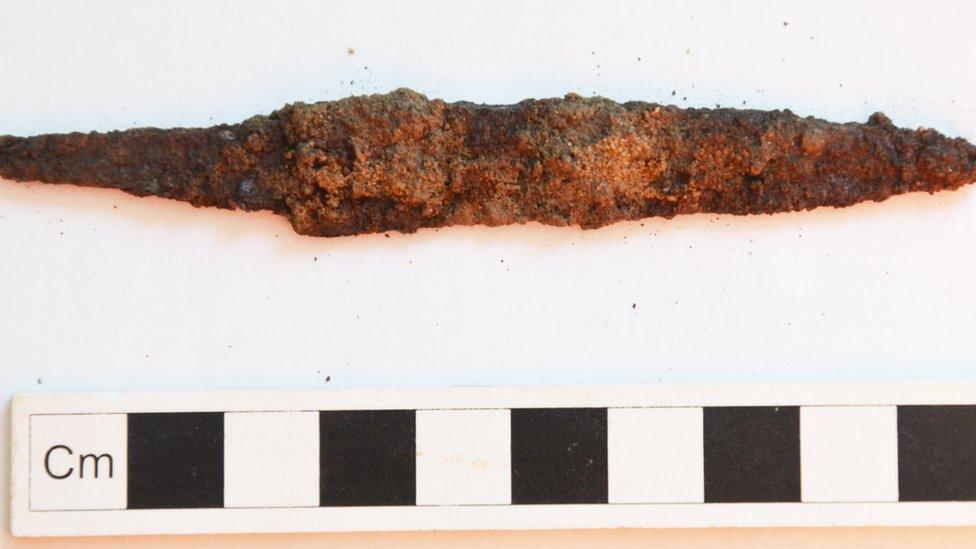
An Anglo-Saxon iron knife was excavated from the boundary ditch in Rendlesham
This establishes Rendlesham as a place of "periodic royal residence" for 150 years, AD 570 and AD 720, from which a major province of the East Anglian kingdom was ruled.
Prof Scull said: "The king would arrive, people would congregate, he would feast his local followers, fairs and markets would be held."
Taxes in the form of "renders" or agricultural produce would be collected.
It had "maybe at most a couple of hundred people as the permanent population, but when the king was in residence there was a huge increase in numbers and the area round the royal compound would have been flooded in tents," he said.
However, as "royal administration became more sophisticated" in the first half of the 8th Century, its importance as a royal centre disappeared.
'The heart of a living society'
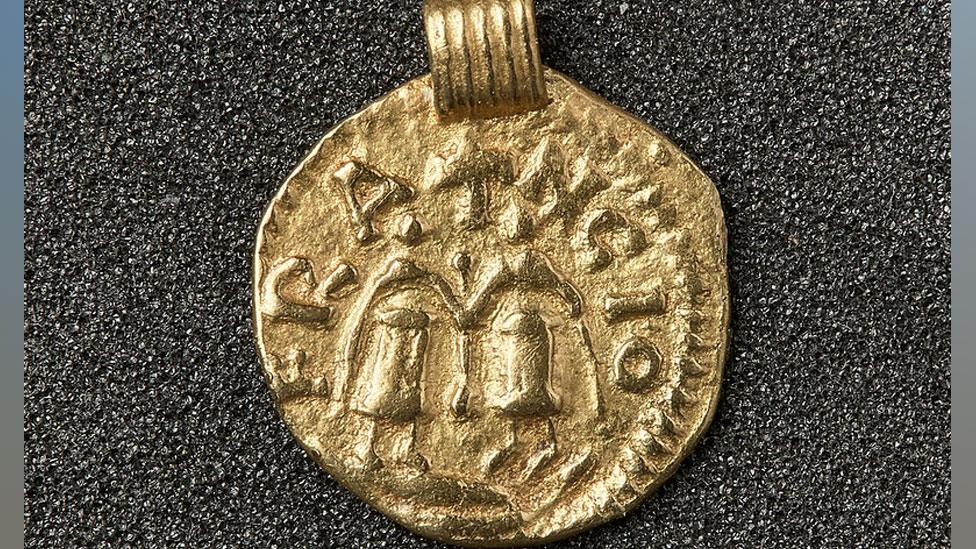
Some of the earliest English gold coins have been found at the site
Rendlesham played a crucial role in encouraging the use of coinage as money, according to Prof Scull.
Some of the earliest English gold coins, struck from the mid-7th Century have been found at the site, possibly minted there.
There is also evidence of metal working, as well as crafts from spinning and weaving to the production of pottery.
The excavations revealed remains of food preparation and feasting that showed the consumption of vast quantities of meat - mainly beef and pork - and dress jewellery, personal items, fragments of glass drinking vessels and pottery.
There were specialised areas for the nastier jobs - such as butchery - alongside the family farms.
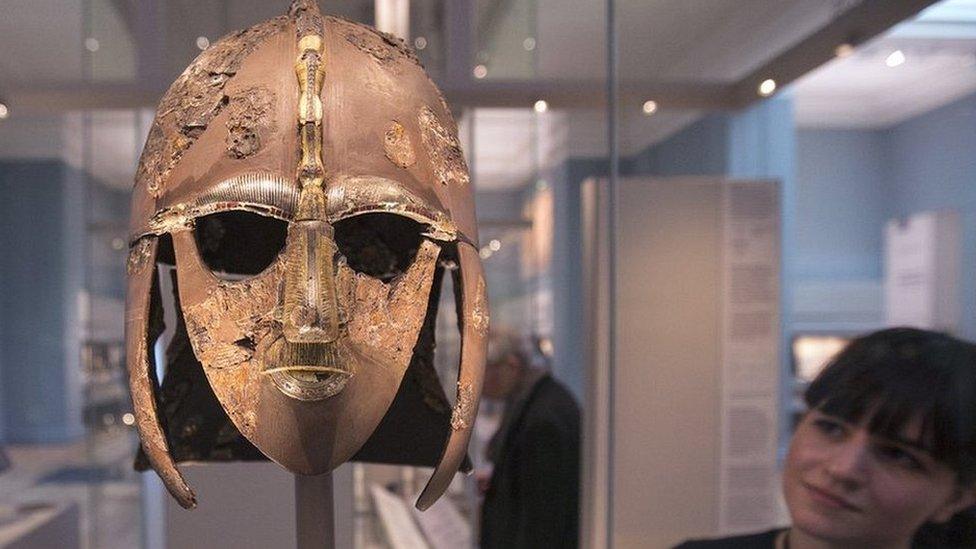
The treasures unearthed at Sutton Hoo represent "only a small selection of the dynastic treasure of the East Anglian rulers"
Prof Scull said it all suggests "we have been underestimating the sophistication and capacity of the societies of 5th to 7th Century England" seeing them as post-Roman barbarians.
While Sutton Hoo is famous for the quality of its artefacts, as well as its huge ship, the ability to create those objects required "the infrastructure, the long-term craft skills" and far-flung "acquisition networks, sourcing garnets, gold, copper alloy".
To sustain this society, enough food needed to be produced to allow specialist craftsmen to live - and to generate a surplus to feast followers and slaughter huge number of animals.
"Rendlesham was the social and administrative heart of the living society, while Sutton Hoo was the relatively short-lived burial ground where some of the Rendlesham ruling family were buried," he said.
"The treasure from the ship burial is stunning, but we have to remember that it survives because it was deliberately buried and represents only a small selection of the dynastic treasure of the East Anglian rulers housed in places like Rendlesham."
A community excavation
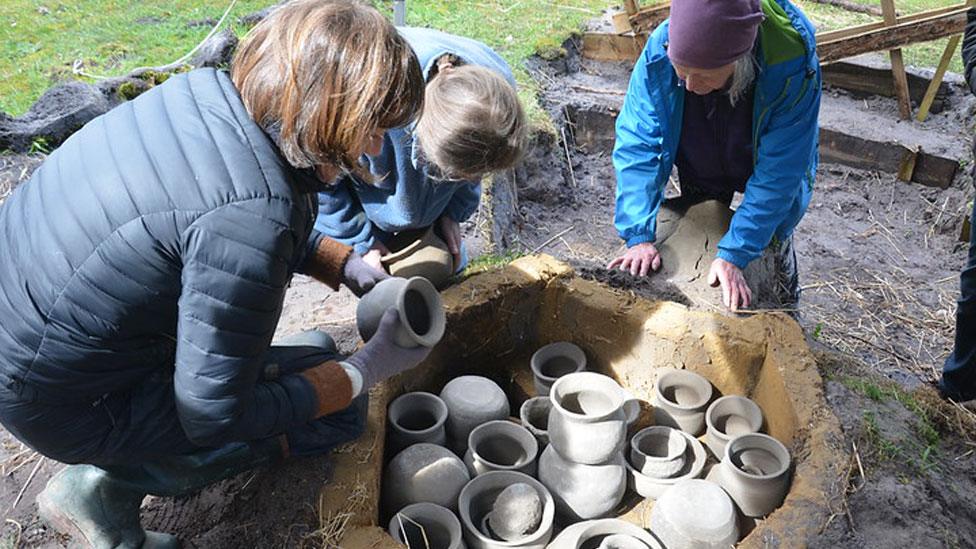
Volunteers have learned to make replica Ipswich ware pots as part of the Rendlesham Revealed project
More than 400 local volunteers contributed to the field work, including primary school children and participants from Suffolk Family Careers and Suffolk Mind.
It is funded by the National Lottery Heritage fund and managed by Suffolk County Council, which has co-ordinated the investigation of the site from the outset.
Prof Scull paid tribute to the way it has been "led and delivered by a whole load of minimally funded or unfunded partnerships from people who want to do it right, with the whole-hearted support of the landowner".
As the post-excavation analysis begins, he believes there are more discoveries to come and stories to be told.

Follow East of England news on Facebook, external, Instagram, external and X, external. Got a story? Email eastofenglandnews@bbc.co.uk , externalor WhatsApp 0800 169 183
Related topics
- Published23 November 2023
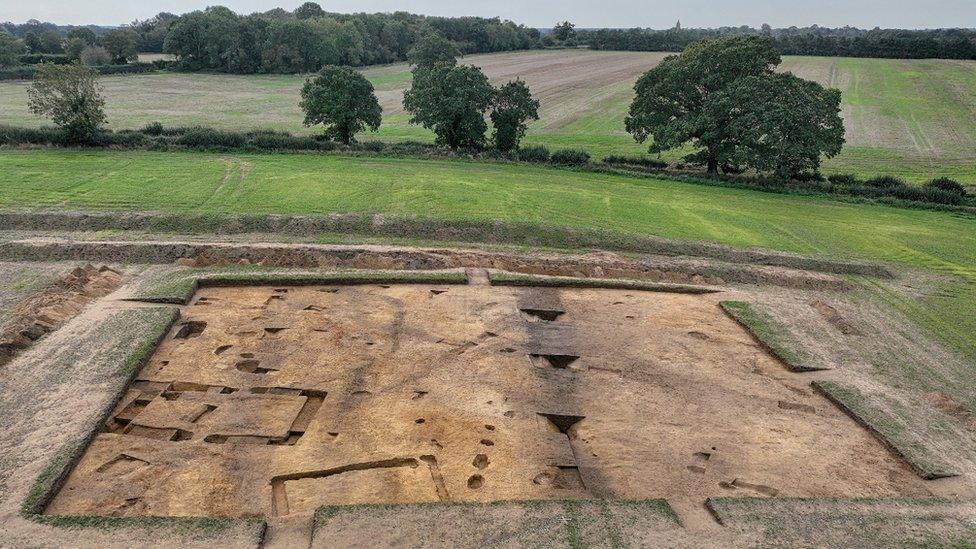
- Published20 June 2023
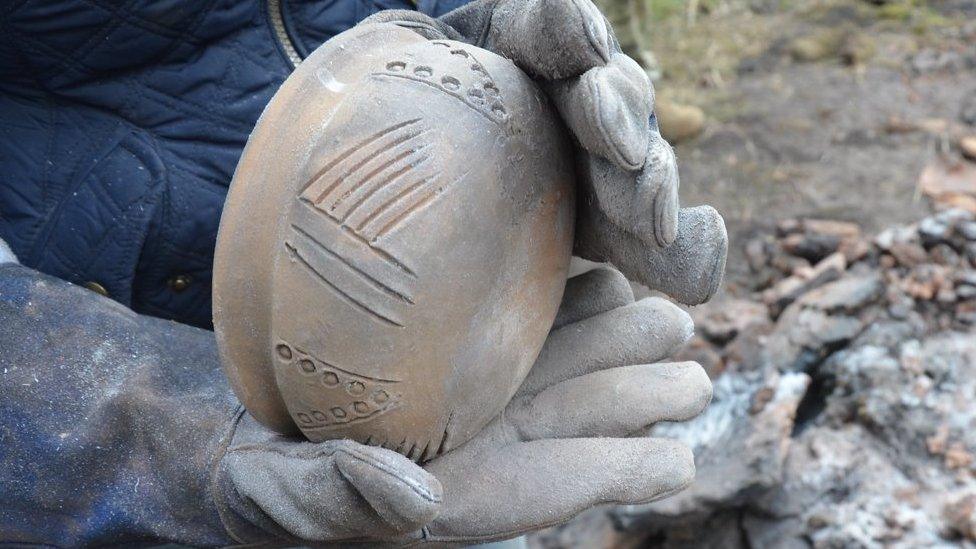
- Published4 October 2022
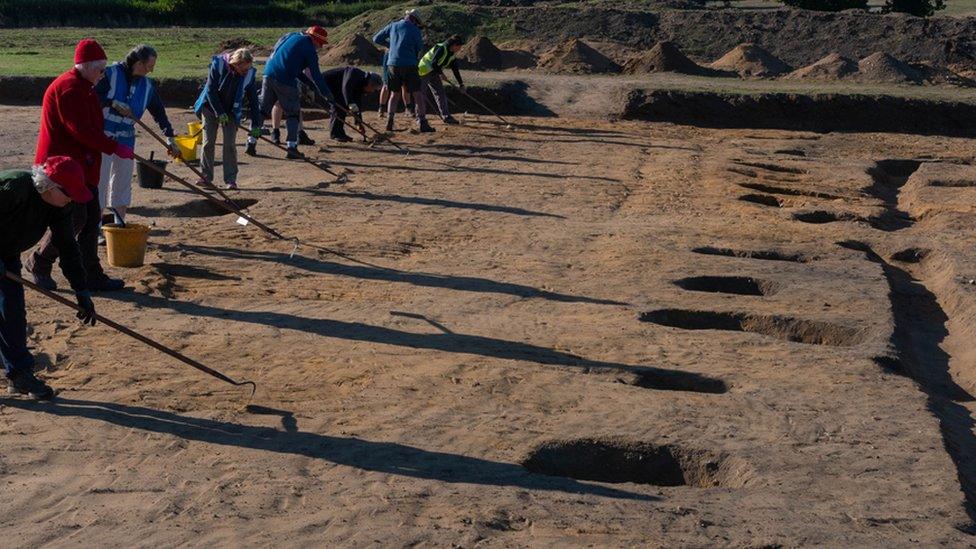
- Published19 May 2022
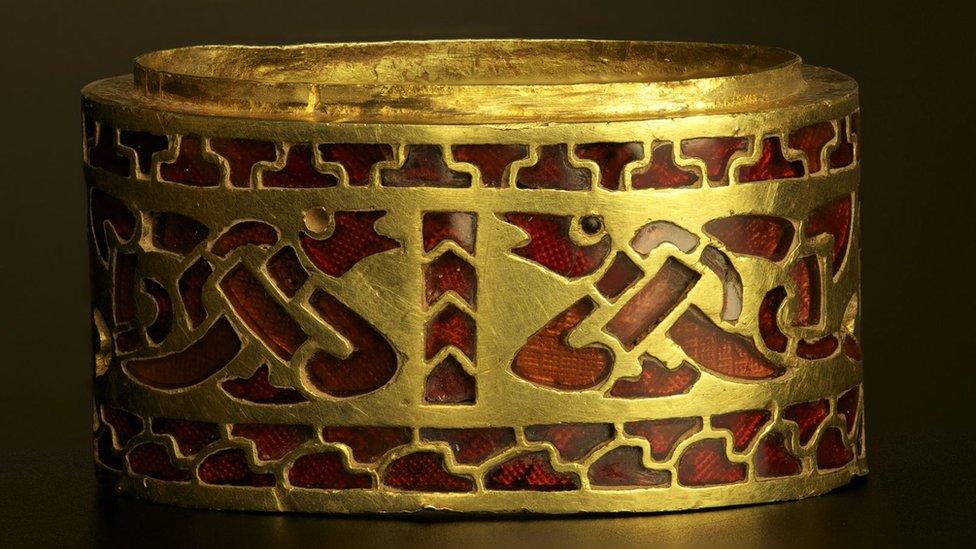
- Published10 March 2014
